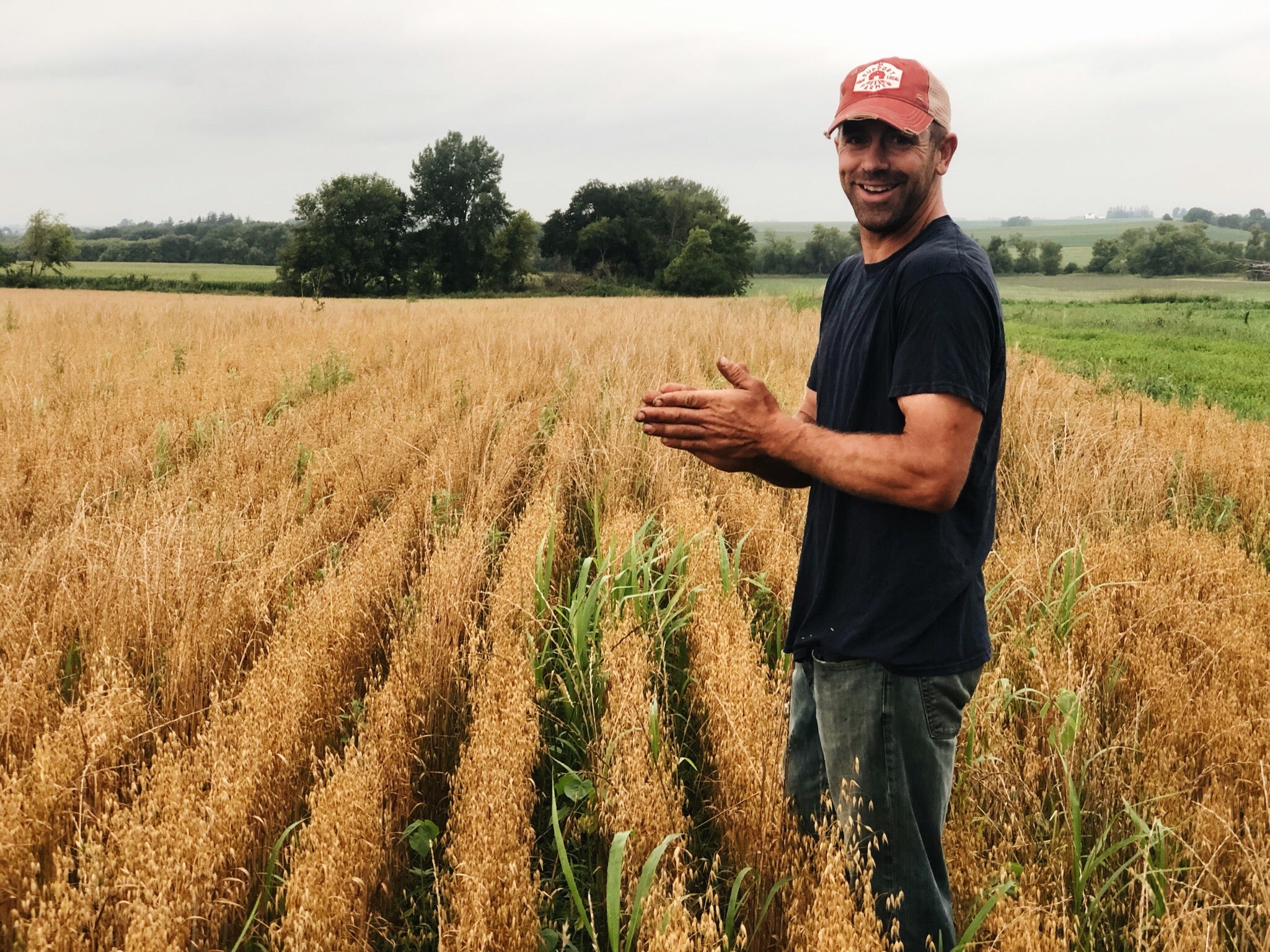Have you ever driven through the rural Midwest? If you've even done it once, you've probably seen mile after mile of one thing: CORN. Beginning in the 1850s, fertile Midwest land that was once used to grow diverse crops morphed into the "Corn Belt" we know today. It is rare to find farms not growing conventional corn or soybeans in this region, and we're hoping to change that.
Introducing the Oat Pilot Project
Since 2018, Seven Sundays along with Oatly, Practical Farmers of Iowa, Grain Millers and Sustainable Food Lab have been increasing the demand for food grade oats in the corn belt (IA, MN, WI – where oats and soybeans are king and queen of the landscape). This is called the Oat Pilot Project. We are providing support to farmers in the form of cost sharing and incentives for transitional and organic practices. In the 3 years since the start of the program, we have increased our oat acreage from 1 farmer with 100 acres to 5 farms totaling almost 500 acres enrolled in the program

Why diversify Midwest farms? Well for starters, our current two-crop corn and soy system is failing our soils and small family farmers. Recent research by PFI shows that when cover crops like oats are added to a traditional soy and corn rotation, these crops help to regenerate the soil naturally so there is less fertilizer and chemical inputs needed. This in turn improves farmer profitability, reduces greenhouse gases (GHGs) and improves water quality from runoff.
Let's dive in a little further.
Why oats?
Once a staple crop in the Midwest, oats have declined dramatically in the last few decades. Research out of Iowa State University has shown that by adding oats back into the rotation, followed by a cover crop, there is a reduced need for chemicals, soil and water health is improved, and farm profitability increases.
Regeneration benefits?
Includes: crop diversity, cover crops, reduced chemical usage, living roots in the ground year round. All these measures are increasing soil health, which is at the heart of regenerative farming.

What are the next steps?
Soil health testing and confirming farm profitability throughout a 3 year rotation. There is still much work to be done to strengthen and expand this pilot project, get more small grains on the landscape, and diversify our industrialized agricultural system.
Ultimately, when you eat good food grown by family farmers, you know what you’re getting — honest, real food grown by people who care about their land, their community and their future.

